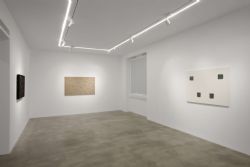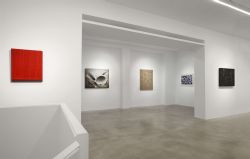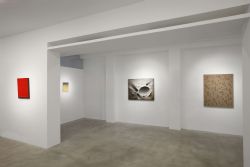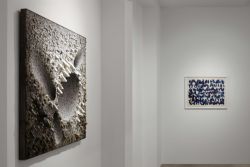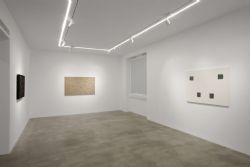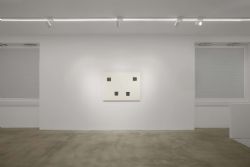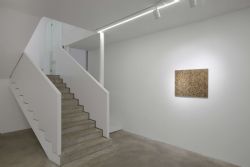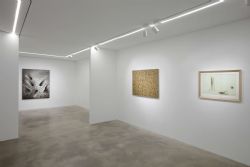Il gesto dell'oriente. Cinque voci dell'Avanguardia coreana
Chun Kwang Young, Park Seobo, Lee Bae, Lee Ufan, Kim Tschang-Yeul
4 marzo – 9 maggio 2020
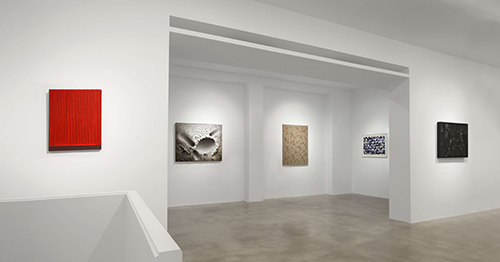
IL GESTO DELL'ORIENTE
Cinque voci dell'Avanguardia coreana
Chun Kwang Young, Park Seobo, Lee Bae, Lee Ufan, Kim Tschang-Yeul
a cura di Gianluca Ranzi
3 marzo - 9 maggio 2020
Tra meditazione e materia, pensiero e visione, la mostra “Il Gesto dell’Oriente. Cinque voci dell’Avanguardia coreana”, alla Dep Art Gallery di Milano dal 3 marzo al 9 maggio 2020, mette in luce la ricerca di cinque artisti che, dalla fine degli anni ‘50 del Novecento, hanno ridefinito e plasmato l’orizzonte dell’arte contemporanea in Corea: Chun Kwang Young, Park Seobo, Lee Bae, Lee Ufan, Kim Tschang-Yeul.
Dal nucleo di circa quindici opere, di medio e grande formato, selezionate dal curatore Gianluca Ranzi, emerge la complessa dinamica tra rinnovamento e tradizione che ha lambito quel paese in un quarantennio di profondi turbamenti e agitazioni politiche e sociali.
Kim Tschang-Yeul (nato nel 1929) è, con Lee Ufan e Park Seo-Boo, una delle figure chiave del rinnovamento che l'arte coreana intraprende tra gli anni '50 e '60. A contatto con esperienze quali l'Informale europeo e l'Espressionismo Astratto, Kim Tschang-Yeul matura quella personalissima cifra stilistica fatta di costellazioni pittoriche di gocce d'acqua rese con iperrealistica precisione su sfondi neutri o ricoperti di ideogrammi. Tra astrazione e figurazione la pittura diviene qui un mantra meditativo che attenua l'ego a favore di uno spazio spirituale e persino terapeutico.
Sta invece al gruppo Dansaekhwa, nato all'inizio degli anni '70 e oggi oggetto di retrospettive nei maggiori musei internazionali, sviluppare la tendenza a un minimalismo monocromo che esalta la fisicità della pittura. Ne fa parte Park Seobo (1931) che recupera l'uso tradizionale della carta Hanji per opere dall'astrazione lineare e rigorosa da cui è espunto l'ego dell'artista a favore di un vuoto meditativo e oggettivo scandito dalle verticali a rilievo e dal gioco delle loro ombre.
Fa parte del gruppo Dansaekhwa anche Lee Ufan (1936), l'artista oggi più noto internazionalmente anche per la sua partecipazione come artista-teorico del gruppo giapponese Mono-Ha. Egli mette a punto una pittura riduzionista fatta di linee e pennellate fluide, memori della tradizione calligrafica, che nella sua opera danno luogo a risonanze e corrispondenze, dialoghi tra pieno e vuoto che interrogano non solo lo spazio dell'opera ma anche l'ambiente circostante.
Chung Kwang Young (1944) fa collidere pittura e scultura in superfici animate da miriadi di pacchettini di carta Mulberry tinta col tè o altri pigmenti naturali, un ricordo d'infanzia legato all'uso coreano di impacchettare con la carta di giornale erbe medicinali e spezie. Come recita il titolo di questi quadri, essi sono "aggregazioni" di armonia e conflitto, di natura e cultura, di ordine e caos.
Lee Bae (1956) lavora invece con silenti composizioni che declinano elegantemente tutte le possibilità cromatiche del nero, ottenuto attraverso sottilissimi strati di carboncino o di lamelle di legno combusto. La combustione e l'effetto del fuoco alludono qui alla metamorfosi di tutte le cose e alla considerazione, comune a tutti gli artisti in mostra, dello spazio pittorico come un evento soggetto all'azione del tempo e quindi aperto anche alla quarta dimensione.
Completa la mostra un catalogo bilingue, italiano ed inglese, con un testo critico di Gianluca Ranzi.
THE EASTERN GESTURE
Five Voices from the Korean Avant-garde
Chun Kwang Young, Park Seobo, Lee Bae, Lee Ufan, Kim Tschang-Yeul
Curated by Gianluca Ranzi
3 March - 9 May
Between meditation and matter, thought and vision, the exhibition “The Eastern Gesture – Five Voices from the Korean Avant-garde” to be held at the Dep Art Gallery in Milan from 3 March to 9 May 2020, highlights the research made by five artists, who from the late 1950s have shaped and redefined Korean contemporary art: Chun Kwang Young, Park Seobo, Lee Bae, Lee Ufan, Kim Tschang-Yeul.
Fifteen medium and large format artworks, selected by the curator Gianluca Ranzi, bring out the complex dialectics between renewal and tradition that has involved the country in forty years of political and social agitations.
Along with Lee Ufan and Park Seobo, Kim Tschang-Yeul (b. 1929) is one of the key figures in the Korean art renovation which started between the 1950s and the ’60s. Looking at the European Art informel and at the Abstract Expressionism, Kim Tschang-Yeul improved his personal style, characterised by pictorial constellations of water drops, painted with hyper-realistic precision on backgrounds that can be neutral or covered with ideograms. His paint is moving within abstraction and figurations, becoming a meditative mantra that restrains the ego, in favour of a more spiritual, and sometimes even therapeutic, space.
Born in the early 1970s and now the protagonist of large retrospectives in the most important museums worldwide, the artistic movement Dansaekhwa developed an inclination to a monochrome minimalism that enhances the physicality on the painting. Park Seobo (1931) takes part in the group, resuming the traditional use of the Hanji paper for his works, characterised by a linear and rigorous abstraction, in which he expunges the artist’s ego, looking for a meditative and objective void, articulated by the vertical lines in relief and by their shades.
Among the artist members of the Dansaekhwa group, Lee Ufan (1936) is the most renowned internationally, thanks to his participation as an artist and theorist in the Japanese Mono-Ha group. He developed a reductionist painting made of lines and fluid brushstrokes, mindful of the calligraphic tradition, which in his work generates correspondences and dialogues between full and void, questioning not only the artwork itself, but also the surrounding environments.

Lee Ufan, 1980, Untitled
Chung Kwang Young (1944) collides painting and sculpture in surfaces animated by myriads of Mulberry paper packages dyed with tea or other natural pigments, a childhood memory related to the Korean habit of packing medicinal herbs and spices with sheets of newspaper. As the title of these paintings says, they are “aggregations” of harmony and conflict, of nature and culture, of order and chaos.
Lee Bae (1956) works with silent compositions that combine all the chromatic possibilities of the colour black, achieved through thin layers of charcoal or burnt-wood foils. The combustion and the fire consequences allude to the metamorphosis that effects everything, considering, at the same time, the pictorial space as an event susceptible to the action of the time, opening also to the fourth dimension.
The exhibition is accompanied by a bilingual catalogue – Italian and English – with a critical essay by Gianluca Ranzi.
